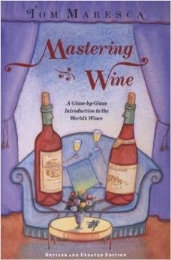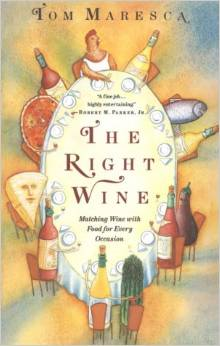I’ve written before about how much I enjoy Vallana’s wines, and I was very much looking forward to tasting this bottle of the 2009 Campi Raudii, which I’d selected as one of my 12 special wines for 2021. There are many reasons for that.
.
.
For one, I find the zone from which the wine originates a fascinating one. It is literally sub-Alpine: It lies in the shadow of Monte Rossa, a peak in the Italian Alps. Its high altitudes and varied soils and exposures produce a Nebbiolo grape very different from that grown in the more famous, more southerly, Barolo and Barbaresco zones. Up near Lake Maggiore, the variety is known as Spanna, and the wine it yields, while less robust than its southern cousins, seems even more elegant, more beautifully structured, and more delicately fruity. It’s usually quite enjoyable from its youth, but most Spanna-derived wines are capable of long aging and intriguing development. I’d like to call it a natural connoisseur’s wine, but that once-honorific word is probably the kiss of death in these fake populist times.
Another reason for my interest in this bottle is that I’m curious to see how the Vallana wines are developing, now that they are crafted by a team of young folk, the siblings Francis, Marina, and Miriam, guided always by their mother Giuseppina.
.
When I first encountered Vallana wines, decades ago, they were made by the present generation’s grandfather, Bernardo, who was famous for the quality and longevity his bottles achieved. Burton Anderson, in his landmark book Vino, waxed ecstatic about the man and his wines, emphasizing the uniqueness of both. That is a formidable heritage to live up to, and I really wanted to see how well the new generation now responsible for cultivation and vinification was measuring up.
And for one more reason: Unlike all the family’s other wines, which carry various DOC appellations (e. g., Gattinara, Boca, Colline Novarese), Campi Raudii is called only Vino Rosso, a designation the family opted for so they could have one wine with which to tinker and experiment, free of strict variety regulation. Not that they appear thus far to have done anything very radical – but more of that later.
For this highly anticipated bottle, Diane prepared an imposing Porterhouse steak, and our Greenmarket conveniently provided the first of the season’s local spinach and, even better, the first of the season’s morels.
The latter are always a special treat, and stand in my estimation as high in the fungus world as Nebbiolo in the grape universe. Morels, chanterelles, porcini, and truffles: That’s the seasonal fungus calendar. All delicious, and at least three of them still within a human price range – as are, it is important to note, all of Vallana’s wines.
 So: That, with a few good cheeses to finish, made up the simple, tasty, and substantial meal for my almost-12-year-old Campi Raudii to accompany. Which it did, very felicitously. Diane and I were struck by how very gentle the wine seemed as it interacted perfectly with the meat-sweetness of that succulent piece of beef, the herbal sweetness and acidity of the fresh spinach, and the woodsy savoriness of the mushrooms.
So: That, with a few good cheeses to finish, made up the simple, tasty, and substantial meal for my almost-12-year-old Campi Raudii to accompany. Which it did, very felicitously. Diane and I were struck by how very gentle the wine seemed as it interacted perfectly with the meat-sweetness of that succulent piece of beef, the herbal sweetness and acidity of the fresh spinach, and the woodsy savoriness of the mushrooms.
We were also struck very strongly by the wine’s freshness, which Diane perceived as tasting of currants and I of raspberry: a wave of light, delightful fruit atop a mature wine’s acid/tannin balance. This Campi Raudii was an extraordinary wine, clearly with years, perhaps decades, of life still before it.
.
.
In an email, Marina informed me that 2009 was a classic vintage in her area, with no extremes for the vines to deal with (unlike the hot 2011 vintage or the cold 2014). Vallana usually vinifies Campi Raudii in a very traditional manner for the Alto Piemonte, as a Nebbiolo and Vespolina blend – about 20% Vespolina, Marina says – fermented in cement. Most of it was bottled without ever seeing any oak, and released young. Some was held back and aged briefly in old oak, and then bottled and labelled as a library release.
I’ve had my bottle stashed away for some years, and it’s not called a library release, so I presume that it’s a sample of the cement-fermented, unoaked wine – which makes its balance and freshness and vitality all the more impressive. This is minimal-intervention winemaking at its best. It just seems that Nebbiolo grown in the Alto Piemonte has an aptitude for long and graceful life, and Marina and her family have an aptitude for expressing it.
And that answers in a strong affirmative all the questions I had about Vallana’s wines. They’re still great, and the kids are doing just fine. Bernardo would be proud.


















































